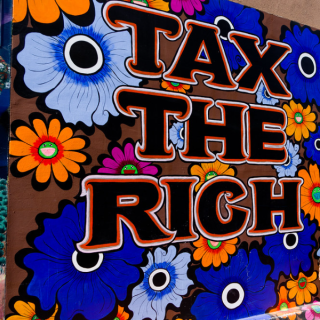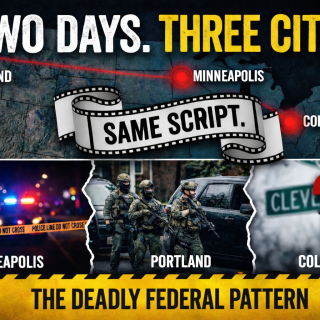This article is posted from its original publication in Washington Monthly, Sept 4, 2021.
In August 10, Senator Tom Cotton of Arkansas proposed an inappropriate amendment to the $3.5 billion infrastructure bill currently being considered by Congress. The provision bans federal funds from going to K–12 schools that teach critical race theory. It passed 50–49.
Cotton and his Republican peers—as well as Democrat Joe Manchin of West Virginia—followed the direction of Tucker Carlson and his peers at Fox News and other right-wing media, who have been mounting a scare campaign to convince white America that radical educators nationwide are blaming their children and grandchildren for the sins of our nation’s past.
Their blatant misconception of critical race theory—a branch of legal scholarship centered on the idea that racism is systemic, not merely in the hearts and minds of individuals—emanates from the self-admitted false claims of Christopher Rufo, an activist at the conservative Manhattan Institute. Over the past year, it has been further propagated by a well-funded, nationally organized network of reactionary groups such as Heritage Action, the 1776 Project, Citizens for American Renewal, and others.
Cotton’s motion follows in the footsteps of Republican governors, GOP-controlled state legislatures and school boards, and extremist politicians like Marjorie Taylor Greene to amplify the lies and thwart teachers from imparting America’s complicated history to their students, a subject that has only grown more urgent since the brutal police killing of George Floyd in May 2020. Even more moderate Republican officials, such as Ohio Governor Mike DeWine, have joined the histrionic and deceitful chorus. On August 30, The Columbus Dispatch reported that his office claimed he opposed critical race theory because “it divides, rather than unites, Americans.” Indeed, Republicans lawmakers in the Ohio General Assembly are advancing legislation to keep critical race theory out of the state’s K–12 classrooms.
Given the constant flow of news stories about Republicans rebelling against the teaching of critical race theory, it would be understandable for the average U.S. news consumer to think this is a raging issue in America. But it’s not. Critical race theory is never taught in K–12 classrooms. In fact, it’s seldom found in undergraduate curricula. Rather, the body of scholarship is taught almost exclusively in law schools.
The Republican outrage operation is not just an attempt to stop conventional teaching about race in U.S. history and civics classes. It is also—but even more so—an effort to invent a crisis that scares enough of their base into throwing money into GOP coffers and voting for Republicans in the midterms. Florida Governor Ron DeSantis has been putting out fund-raising videos for his reelection campaign geared at banning critical race theory in the Sunshine State’s schools.
That’s why it’s essential for media organizations to stop reporting on “the debate” over critical race theory. In reality, there is no debate. It’s a GOP-manufactured controversy and grifting scheme.
Unfortunately, the project has been successful. This is due, in large part, to an astutely organized publicity campaign from right-wing activists. Not only do the activists secure airtime on cable television and disseminate endless posts on social media, but they also follow a detailed playbook. Just listen to Tucker Carlson on Fox interviewing Rufo. Or listen to the “protesting parents” interviewed on Fox News or OANN. Almost methodically, they all use the same language. Students are being “shamed,” “blamed,” and “made to feel responsible” for American slavery or institutionalized racism.
The parents and their amplifiers follow, almost word for word, the scripts circulated in the activist handbooks and tool kits to oppose critical race theory released by Heritage Action and the 1776 Project.
For example, this summer, two mothers of students at the private preparatory Columbus Academy in Ohio took their admittedly scripted remarks to a right-wing national podcast and to school meetings. The gambit backfired. The children were expelled from the school because their parents had carried out a sustained campaign of “false and misleading attacks” on the school, in violation of an enrollment agreement they had signed.
The parents’ tactics should come as no surprise. The anti–critical race theory movement stems from a pattern of dishonesty. In widely repeated comments, for instance, Rufo created false quotes from supposedly highly reputable critical race theory scholars that, he said, showed them to be “Marxists who advocate the abolition of private property and the overthrow of capitalism.”
To understand these campaigns, we must look back. In the post–World War II era, with the emergence of civil rights movements and, in particular, the 1954 Supreme Court decision in Brown v. Board of Education, there was a white backlash to changing societal norms that welcomed, rather than suppressed, racial diversity and inclusion.
The resistance that ensued—what I and others call “white fright and flight”—is a prerequisite to understanding the fireworks over critical race theory. The “fright” of greater racial integration led to “flight,” both literally in terms of residential and school relocation, and politically in the rejection of policies that would address racial inequities, such as affirmative action, expanded affordable housing, and even simple teaching about race.
In the 1980s and ’90s, Republican politicians discovered clever, if manipulative, ways of using this fear to their advantage. Ronald Reagan derided the welfare queen and spoke of ending government support programs. Newt Gingrich did his best to maintain this emphasis—he pushed strenuously for welfare reform and other cuts to safety net programs—in his release of the Contract with America. In 2016, Donald Trump took a page out of their book by declaring undocumented immigrants to be “rapists” and “criminals” crossing the southern border—and claiming that Barack Obama, our first Black president, was not born in this country. All of these charges sent the same message to red America: that people of color posed a threat to their way of life.
Of course, the latest iteration of this battle is playing out in a dramatically different media landscape. Conservative charlatans can easily spread their misinformation on Facebook and Twitter, and right-wing cable networks like Fox, Newsmax, and OANN can amplify it.
At this point, we can expect bad-faith arguments from Republicans to sow dissension and fear. But we should not expect everyone else who knows better to fall for it. With a new school year beginning, conservatives will surely continue to use critical race theory as a cudgel in the culture war. For the rest of us to fight it most effectively, we must know the true nature of what we’re up against.



